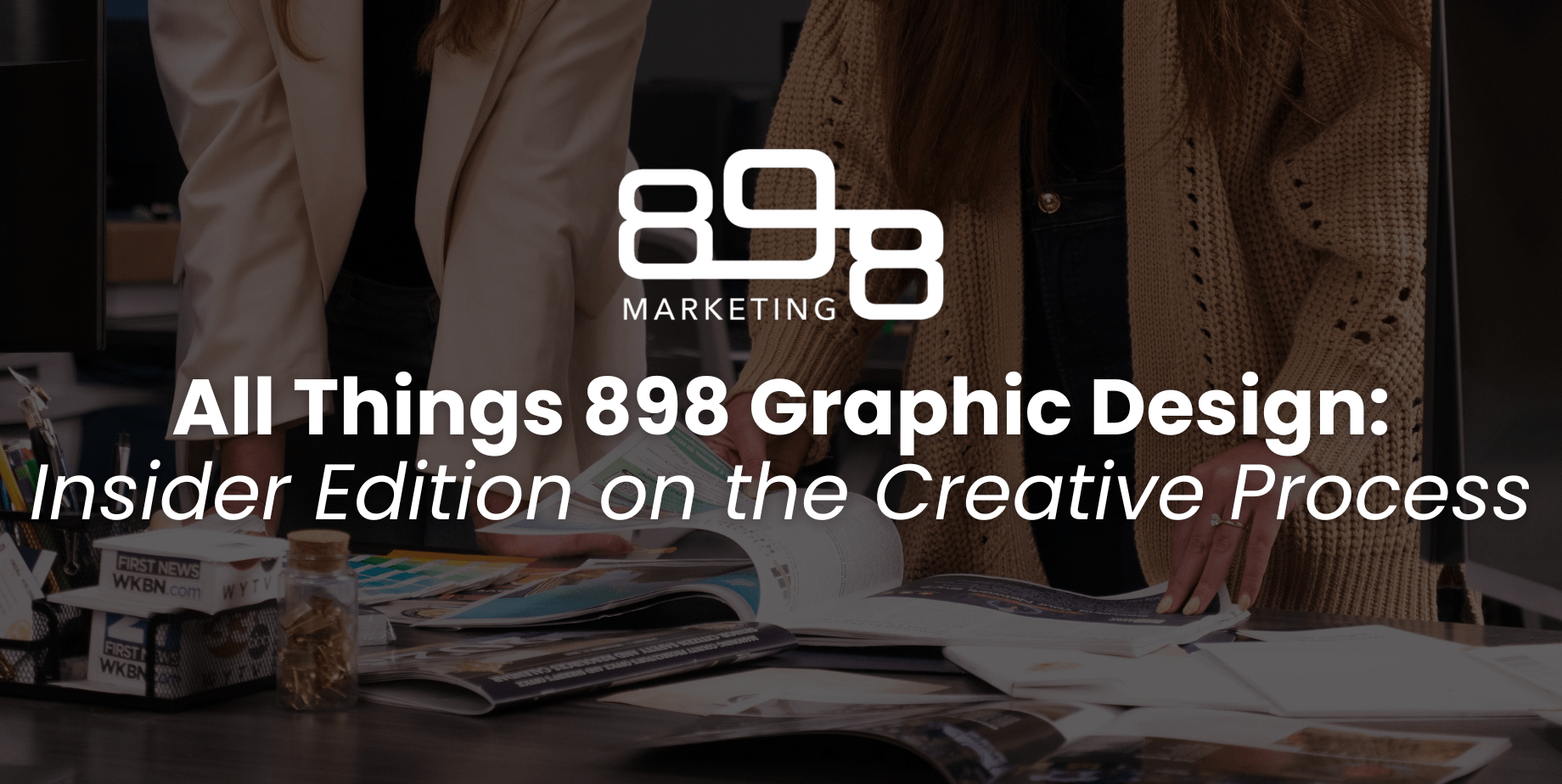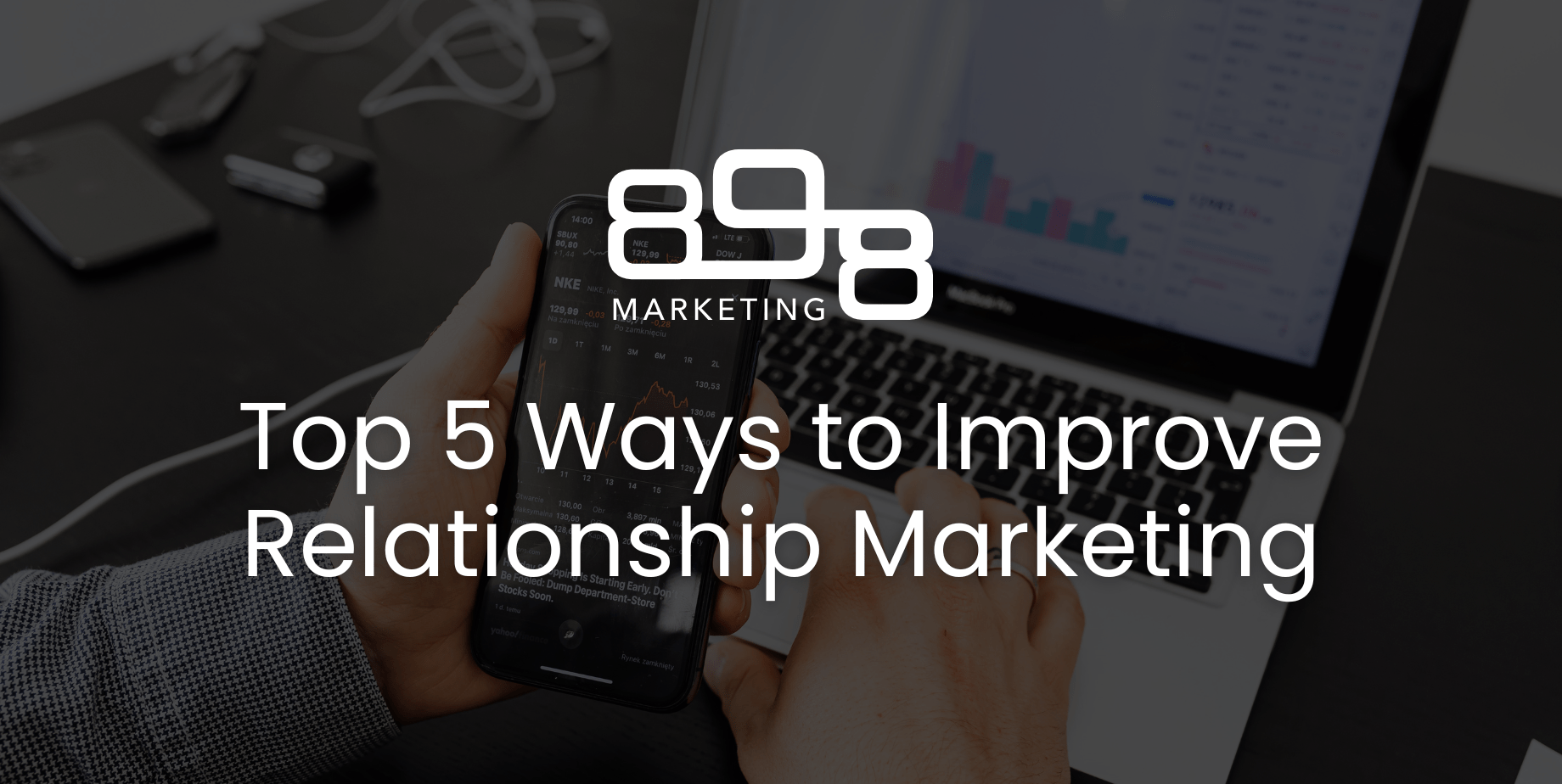
All Things 898 Graphic Design: Insider Edition on the Creative Process
- Lexi Marco
- January 5, 2024
- Design
- content marketing, graphic design
- 0 Comments
What is Graphic Design?
Our Creative Designer, Maddie, says it well: “Graphic design is important for marketing agencies for many reasons, but mainly for its ability to effectively communicate messaging and branding to its clients. Visuals are such an important part of the world we live in and our clients depend on compelling and well-designed creatives to sell products, share a message, or enhance everyday life.”

Why Does Graphic Design Matter?
1. Engaging Messages and Communication
Graphic design is a powerful tool for visual communication. It helps convey complex ideas, messages, and information clearly and concisely. Through the use of visual elements such as images, typography, and color, graphic design enhances the overall communication experience, making it more engaging and easily understandable.
2. Brand Identity Consistency
Graphic design is critical in creating and maintaining a strong brand identity. Logos, color schemes, and overall visual consistency help establish a brand’s personality and make it easily recognizable. Consistent and appealing design elements contribute to building trust and loyalty among consumers
3. User Experience Improvement
In the digital age, graphic design plays a crucial role in enhancing the user experience of websites, apps, and other interactive platforms. Well-designed interfaces improve usability, guide users through a seamless experience, and contribute to positive perceptions of a brand or product.
In fact, it is said that 94% of users will reject a website if the design is not appealing. If that doesn’t justify the importance of great graphic design, we aren’t sure what would.
4. Social and Cultural Influence
Graphic design is an essential part of our cultural and social landscape. It reflects and shapes societal trends, aesthetics, and values. Design elements in media, art, and advertising contribute to shaping public opinion, influencing cultural movements, and even fostering social change. Graphic design has the power to evoke emotions, provoke thought, and inspire action.
5. Marketing and Advertising Impact
Effective graphic design is a key component of successful marketing and advertising campaigns. Eye-catching visuals and compelling layouts grab attention, communicate a message, and influence consumer behavior. Whether it’s a poster, social media ad, or packaging design, well-crafted graphics contribute significantly to the success of marketing efforts.
What is the Process for Graphic Design?
Identify the Scope of Work
The very first step in this process is, of course, meeting with the client to discuss needed creative assets, color and font preferences, and project timeline. This is a great time for our creative team to establish a relationship with our clients. Creative assets could include brand logos, digital graphics for their website or social media, brochures, packaging designs, and more.
Create a Creative Brief
Once the scope is determined, our creative team works on creating a Creative Brief. This serves as a guideline for our creative services and outlines what is needed by both the creative team and client, including assets like photos.
Research Process
Next, is the research process. This process includes researching the industry, if names or logos have been used already- for legality and trademark purposes, and gathering inspiration. This step is important in directing the road to a finalized product.
Creative Process
The creative process is the process of actually creating the requested graphic design asset. The tools used include Adobe Creative Suite or Canva, and depends on the scope of work. This is where the creative brief and research come together.
Edits and Approvals
The final stage of the graphic design process is the edits and approval stage. This stage is where our graphic designers send their progress to the client for feedback and potential revisions. If there are edits, it is sent back, corrected and then forwarded back to the client for final approval.

898 Marketing Graphic Design Team’s Recommended Software and Programs:
- Adobe: Adobe Creative Suite is a comprehensive software package widely used by graphic designers, photographers, and multimedia professionals, offering a suite of powerful tools such as Photoshop, Illustrator, and InDesign for image editing, vector graphics creation, and desktop publishing, enabling seamless and versatile creative workflows.
- Canva: Canva is a user-friendly graphic design platform that empowers individuals and businesses to create visually appealing content without the need for advanced design skills. With its intuitive interface and a vast library of templates, Canva simplifies the design process, making it accessible to a broad audience for a variety of purposes, from social media graphics to presentations.
- Shutterstock: Shutterstock is a leading stock photography and royalty-free image platform, offering a vast repository of high-quality visuals for creative projects. It provides designers, marketers, and content creators with a diverse selection of photos, illustrations, and videos to enhance and elevate their work.
898 Graphic Design Team’s Recommended Education Resources:
- YouTube: YouTube is a great resource for all graphic designers looking to learn how to use the tools mentioned above, tips and industry tricks, best practices and more.
- LinkedIn Learning: LinkedIn learning is a great tool for people looking to learn more about establishing a brand, company identity, and more. These videos are free for all. Just create an account and get started learning.
- TikTok: TikTok is great for inspiration for logos, design graphics, and more. This platform offers quick tips and tricks to grow your graphic design knowledge base.
- Coursea: Coursea offers courses- both free and paid- that teach in detail about brand identity, the creative process, and more.
Now You Know!
The dynamic world of graphic design continually evolves through a creative process that seamlessly blends artistry with technology. From the initial spark of inspiration to the polished delivery of a design, the journey is marked by meticulous attention to detail, collaborative feedback loops, and a commitment to effectively communicate messages visually. As we navigate the ever-expanding toolkit of platforms like Adobe Creative Suite and user-friendly solutions like Canva, and draw from vast resources such as Shutterstock, the possibilities for innovation and expression in graphic design remain boundless, ensuring a vibrant future for this dynamic and essential field.
Be sure to contact 898 Marketing with any graphic design needs.







Recent Comments